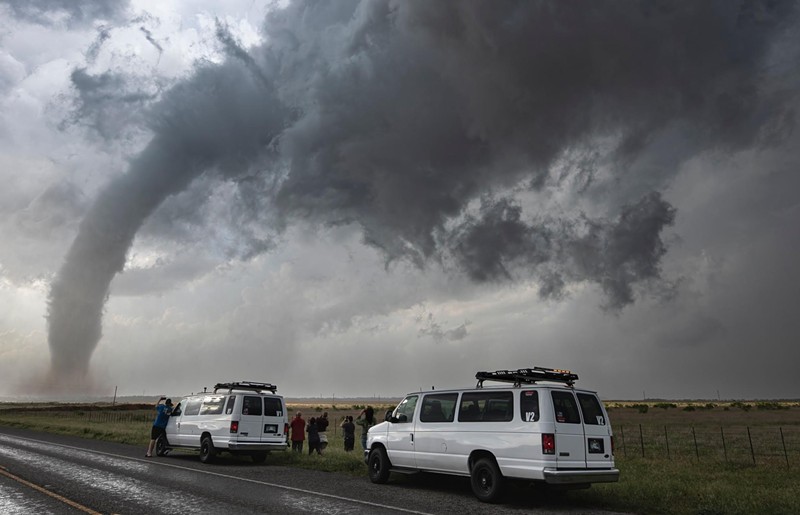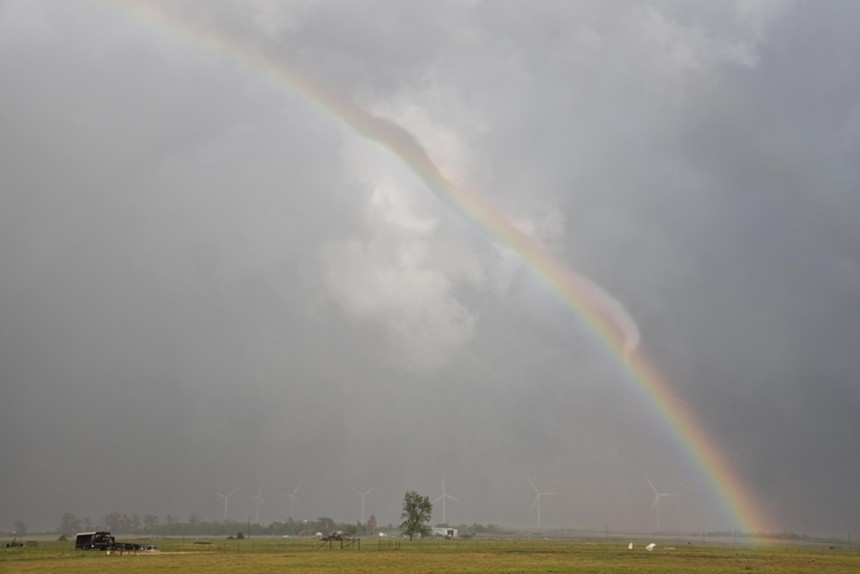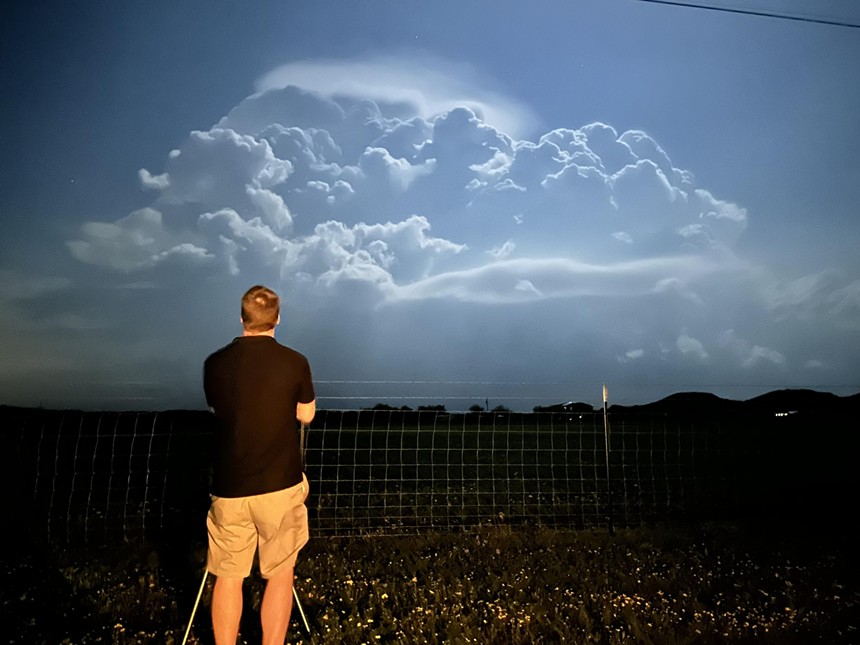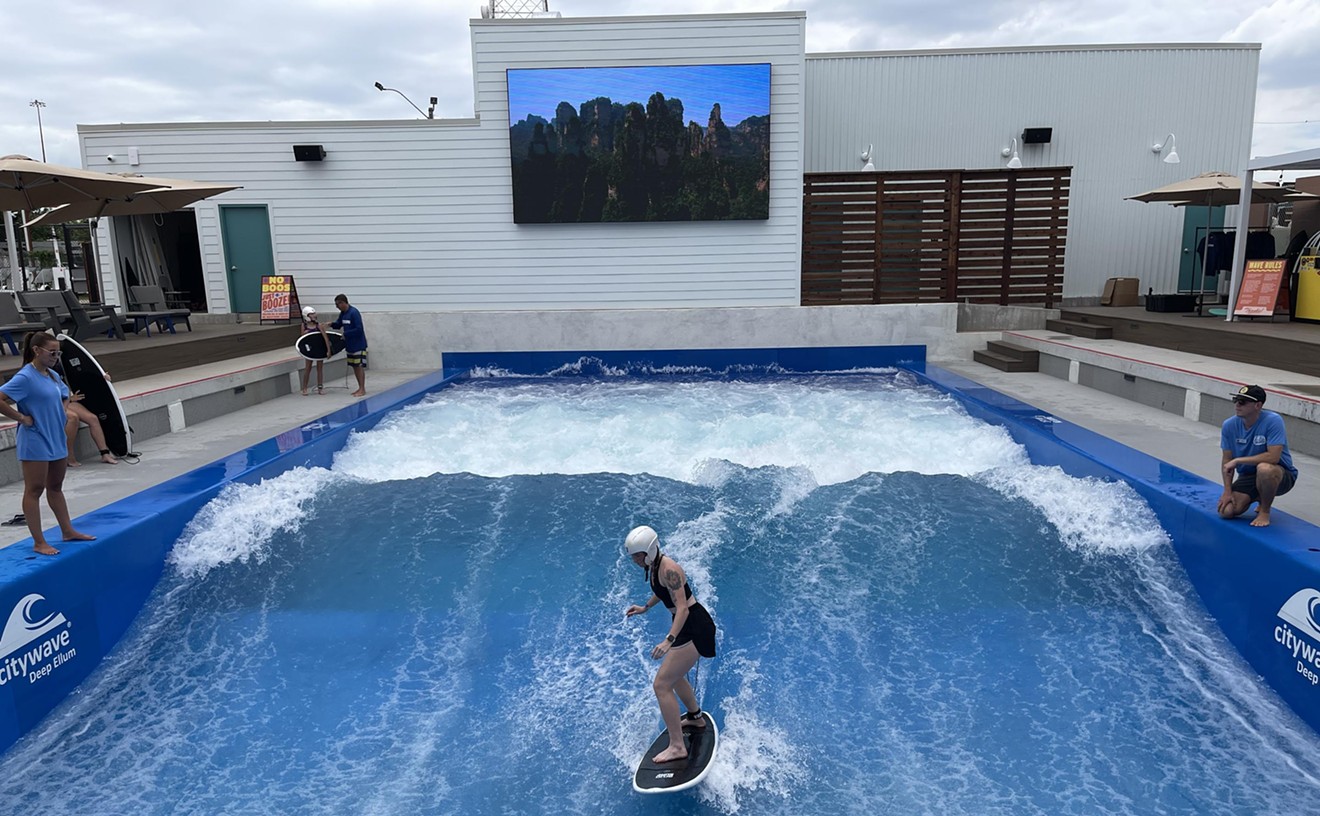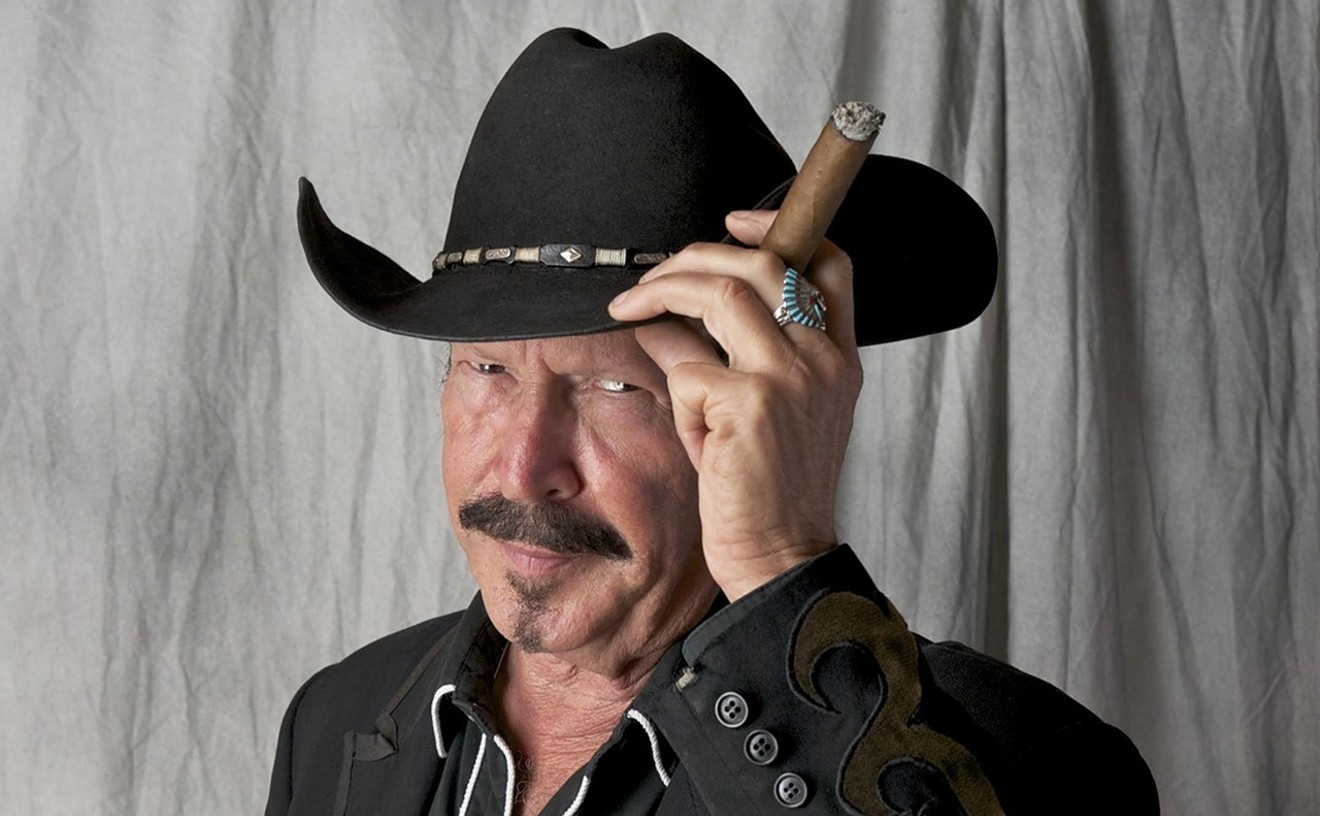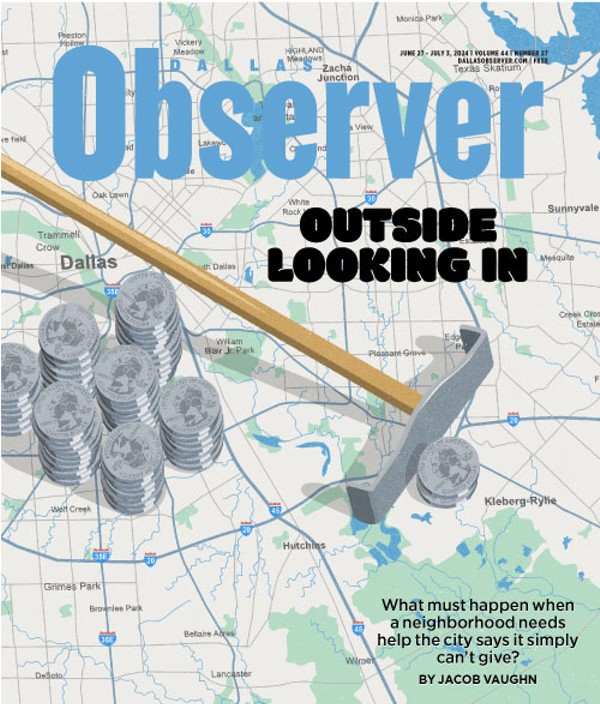But tonight is different. Tonight, Cooley’s a nervous wreck.
Gripping the steering wheel of his white 2013 Honda CR-V, Cooley is one of many tense Cooke County drivers facing Interstate 35 on the evening of May 25. Rather than the highway’s typical blare of angry honking and never-ending construction, the sounds of wailing sirens and the pelting of harsh rain are all that can be heard. Panicked motorists drive on the wrong side of the road, while others slow traffic by stopping their vehicles all together under the bridge.
Although the other drivers racing home for cover are doing little to ease Cooley’s nerves, he can’t exactly blame them for their reactions. There’s an EF-3 tornado headed their way, and a storm with winds that can reach speeds of 140 mph doesn’t make an ideal environment for clear thinking.
Cooley navigates the dark roads as best as he can to avoid having a wreck, but damage is the last thing he’s worried about. His car is already littered with hail dents from years of chasing. He gave up on filing damage claims about a decade ago.
As he and the thousands of people watching his live-streamed coverage see drivers move in a number of directions away from the storm, Cooley continues his path toward the tornado. He grasps the wheel a little tighter as he gets closer to the twister, which is now just about three miles out. Sweat drips down his back, his heart rate increases and his breathing starts to become heavier.
Cooley is well aware that one mistake could cost him his life. And despite his body giving him every instinctual sign that he should turn back, he presses on.
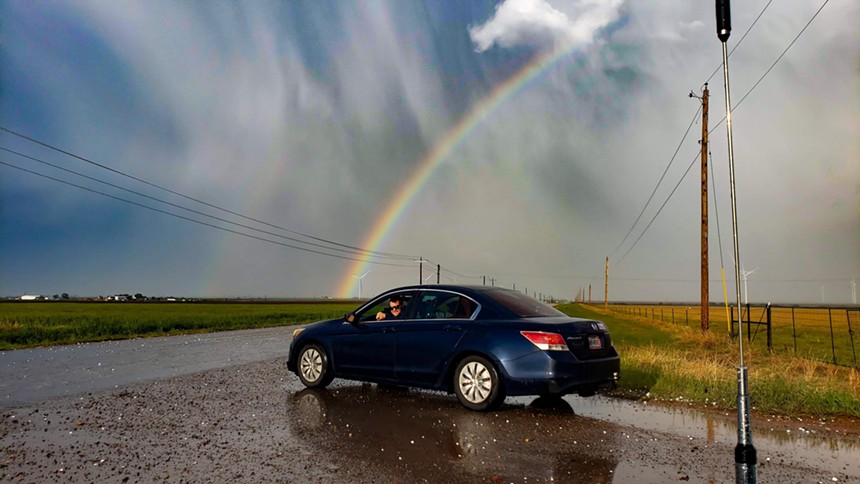
Extreme Tornado Tours owner Nick Drieschman likes to think of himself as a lifelong storm chaser.
Jason Cooley
Twister Mister
“It was my duty,” Cooley says. “I’m putting myself in harm’s way, but there were other people watching my live coverage that depended on me and my updates. I wasn’t getting right up toward the tornado, I wasn’t exceeding my limits. I was doing my job.”Tornado chasers, known professionally as “storm spotters,” are spread all across Tornado Alley, and combined they conduct hundreds of chases each year. However, the day-to-day work of these tornado enthusiasts isn't exactly as Hollywood classics like Twister paint it to be. Cooley confirms there are no cows flying overhead across fields, no people clutching onto metal pipes for dear life and no race to deploy specially designed windstorm sensors. However, he says the time, passion and exhilaration behind chases is still very real to on-the-scene spotters.
“I can’t sit with a storm happening,” Cooley says. “I’m always paying attention to the weather and the conditions around me. Being able to have the thrill of seeing the weather on demand when I can, and then also being more prepared in case bad storms happen – it gives me a kind of edge.”
Cooley got into tornado chasing like many in his field: through his innate love for the weather. As a meteorology and mathematics student at The University of Oklahoma, he began networking with local weather enthusiasts and storm chasers and took up chasing as a hobby in 2011.
Also like many in his field, Cooley jokes that his pursuit of tornadoes is comparable to an addiction.
“And it’s not always a healthy one,” Cooley says.
Throughout his career as a chaser, Cooley has gotten as close as a quarter-mile from a twister. These days, he typically stays farther than a mile away, keeping his safety in mind for the sake of his wife and two children back home.
While some of the dangers of storm chasing are greatly exaggerated (you’re actually more likely to be killed or injured in a car accident than from storms), even the experts acknowledge that there are still a number of obvious risks. Spotters like Cooley still put themselves and their vehicles in harm’s way from damaging hail and flooding. Cooley says he knows a few chasers who have been struck by lightning while on the job.
“Each time you’re out there, you know there is always a possibility of getting injured, but the thrill of going out certainly outweighs it.” - storm chaser Jason Cooley
tweet this
Long days on the road in pursuit of a storm without eating or sleeping properly also take a toll on a chaser’s body. But for Cooley, it’s always worth it for the adrenaline-inducing event of seeing an active tornado.
“Each time you’re out there, you know there is always a possibility of getting injured, but the thrill of going out certainly outweighs it,” Cooley says. “Now, after so many years, it doesn't have quite the same kind of charm as the first one. It never will. But it’s all still very exciting to be able to witness.”
Today, Cooley is based in Dallas and makes a living from chasing in one of only a few ways a storm spotter can: reporting live for local news stations and selling his videos through a broker to larger networks like CBS, ABC and The Weather Channel. He also works as the social media director and content manager for Texas Storm Chasers, a group whose 10 members chase, forecast and provide active weather coverage about anything and everything storm-related in the state.
Cooley frequently livestreams his chases, and says his live visuals of the recent Cooke County tornadoes allowed forecasters and people in the storm’s path to know exactly when it hit the ground before it reached I-35. The EF-3 storm went on to demolish homes, topple trees and kill seven people, including four children. The severity of such cases of extreme weather is a major reason that Cooley stresses the importance and impact of professional spotters and what their work does for the public.
“Spotters help provide that information, and those companies and stations will get that information out on television or social media, which can save lives,” Cooley says. “Those reports are crucial because the forecasters sitting in the office, well, they don't know. They can't always guarantee that a storm on the radar has a tornado. So it comes down to the storm chaser and their reports a lot of the time to confirm a tornado and its severity.”
Knowing the full extent of the impact a tornado can leave makes the idea of chasing too daunting for many outside the field, but thousands of people from around the world flock to Tornado Alley for the chance to spot their first funnel. “Tornado tourism,” adventure tours led by professional storm chasers, allows weather enthusiasts and thrill seekers alike to schedule a trip to safely get close to an active tornado.
Extreme Tornado Tours owner Nick Drieschman likes to think of himself as a lifelong storm chaser. Like Cooley, he discovered his love for weather as a boy, and he began to photograph and document storms and clouds at the age of 6. In the technical sense, he’s been a storm chaser for 12 years and directs and guides tours across Tornado Alley, chiefly in Oklahoma and Texas.
People can book a week-long trip with Extreme Tornado Tours throughout the spring tornado season alongside veteran tour guides and meteorologists. Tours start at just under $3,000. In addition to guaranteed window seating during real-life severe weather chases, guests are also given forecast classes and in-field sessions throughout their niche vacation.
“I think that it’s a healthy response for people to look at tornadoes and be afraid of them, but there’s a small set of people that are just enamored with tornadoes and severe weather,” Drieschman says. “We’re part of that group that when we were young, we were that kind of kid that was staring out the window during the lighting while everyone else was hiding under the covers. And many of us still love to and want to explore that interest and curiosity.”
Drieschman says he’s seen an exponential growth in the storm chasing during his time in the field. He views tours as an opportunity to give fellow weather enthusiasts a safe introduction to the storm-chasing lifestyle. While his admittedly biased opinion is that tours are the best way for newbies to do tornado spotting, he says the limits of larger groups and prioritizing the safety of inexperienced guests create a different experience than what you’d witness as a professional chaser.
Although Cooley considers the thrill of the chase to be a large personal benefit of the job, he says professional storm spotting has always stressed the importance of accurate forecasting and public safety. More often than not, storm chasers are not merely adrenaline junkies. They’re a knowledgeable community committed to their love of the weather and need to raise awareness of storm safety.
Keeping an Eye on the Eye of the Storm
“There's definitely a whole spectrum of attitude toward chases and chasers between themselves, but at the end of the day, when high-impact tornadoes are happening, the mission is the same for all of us,” Cooley says. “And that’s to get the footage live, provide real-time information. Especially in the face of tragedy, that kind of trumps everything else.” Both Cooley and Drieschman know that there are plenty of chasers who get into the work without understanding the real fundamentals behind storm chasing. Many new and inexperienced chasers easily feed into the thrilling aspects of the chase by prioritizing the quality or extremity of their content over their own safety. Whether you’re looking to get into storm chasing as a one-time trip, a full-time profession or something in between, both Cooley and Drieschman hope to keep the genuineness of the field alive by showing newcomers how to do things the right, safe and smart way.
Cooley and Drieschman recommend tagging along with an experienced professional. Tornado tourism businesses are typically led and organized by a team of experienced meteorologists and chasers. For self-conducted chasing and reporting, Cooley says aspiring chasers can find a number of sites and social groups where they can network and pair up with veteran chasers, many of whom are often happy to meet and help guide newcomers into professional spotting.
“A lot of these folks, we all share the same passions, so it’s best to get to know your local chasing community,” Cooley says. “If you really care about what you’re doing out there, for yourself, for others, you’re always going to want to do it the right way.”
Cooley has driven for and guided tornado tours himself over the years, but tornado tourism can be a bit of a Catch-22 situation in his field. He wants to encourage others to experience the unique realm of severe weather, but he knows at times that touring can romanticize the more serious aspects and impacts of a tornado.
“I think people get that mixed up with tornado tours,” Cooley says. “While they go out to have these extreme adrenaline pumping photography opportunities, it's also kind of like, ‘Are you really celebrating destructive weather?’ It's [tornado tourism] taken a lot of foothold across the globe, so I'm all for it as long as the tornado tours aren't actively celebrating the destruction of life and property.”
Seeing the destruction left in the wake of natural disasters is the worst part of chasing, Cooley says. No matter how many tornadoes a chaser has experienced, Cooley doesn’t believe it ever gets easy to learn about the many ways a town has been ripped apart by a storm. He knows of several storms he and other chasers have covered that have resulted in fatalities, including the deaths of on-the-scene chasers themselves.
After the 2013 El Reno tornadoes resulted in the deaths of Tim and Paul Samaras and Carl Young from the Discovery Channel show Storm Chasers, Cooley says he began to reconsider his storm-spotting career and almost wanted to give up chasing. However, he says he hasn’t reached his final breaking point just yet, mainly because he reminds himself of what duty he has to the communities placed in a destructive tornado’s path.
“There's really no gratification for documenting a tornado once it's really destroyed people's lives,” Cooley says. “It’s a very sobering and humbling experience. But sometimes you have to think about how your documentation can still help other people and the importance of that, and that’s what keeps you in it. It keeps me going.”

